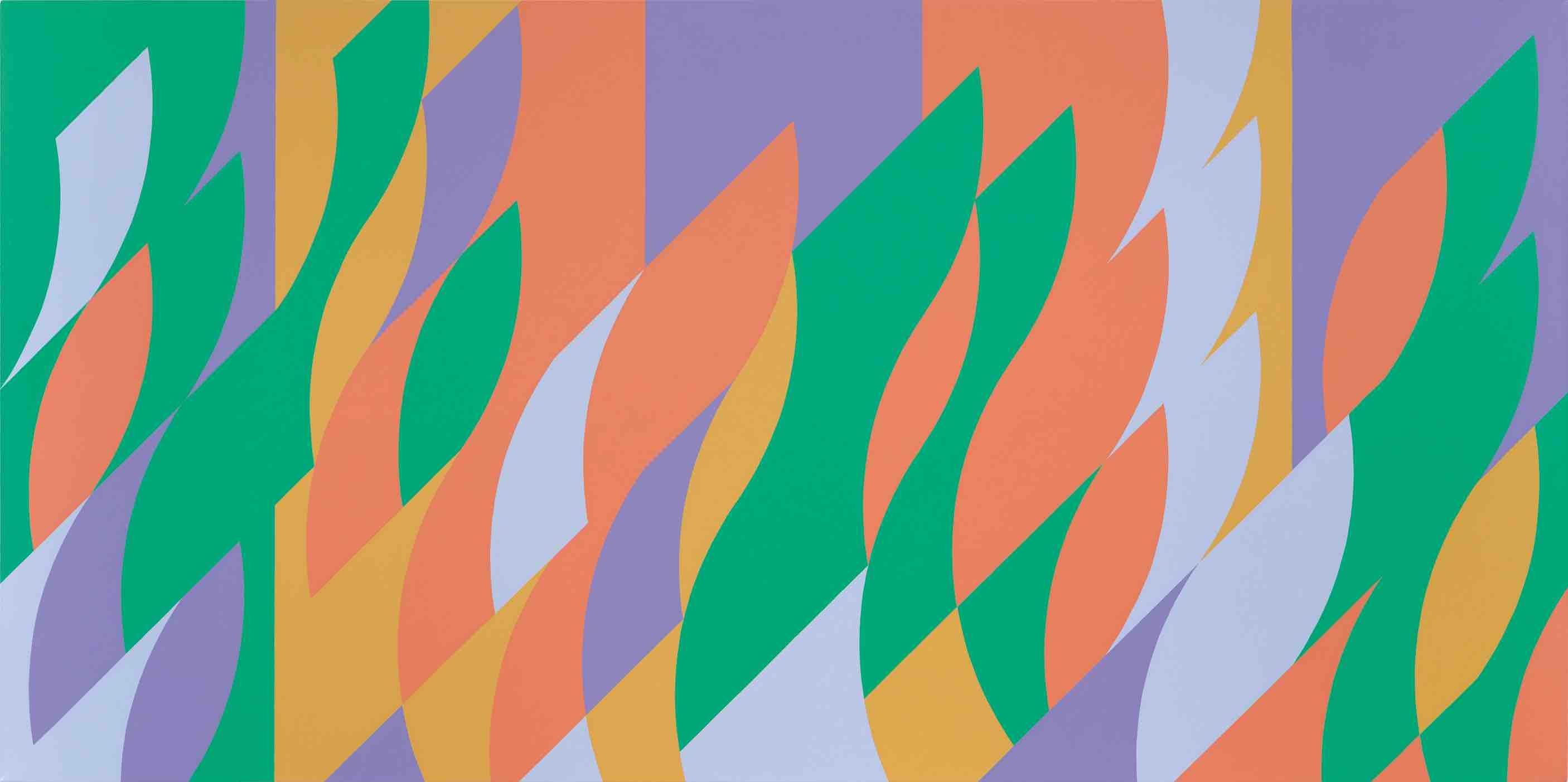Bridget Riley, Hayward Gallery
The
entrance to the exhibition brings you into the largest room and directly on
your left is a large mural piece called Composition
with Circles 4. I read that these types of wall drawings are fairly
recent in her career, starting in the late 1990s. The piece takes up your
entire field of vision and drags your eye around almost against your will, not
allowing it to settle. The plain black line on the bright white wall with the
perfect neatness makes a sharp image and little bursts of energy where the
circles intersect.

Next to this is a small spiral wall that creates a little
enclosure that you queue to enter. The inside walls have a black and white
pattern on them designed for this installation and the curved wall that
surrounds you does away with edges and so you are completely immersed, I really
like how this has been done, the image itself is exciting, building up from
small beginnings into a dramatic central event, the installation massively
adding to the experience and creating an interesting discussion about the
canvas and how sculptural a painting can be.

Up the ramp you enter a few rooms
with brightly coloured, medium sized pieces, lots of stripes and lines of
glowing colours that fight with each other like chemical reactions, creating a
buzzing and blurring image.

Upstairs we witness the show pieces, the huge and
attractive works of colour and alternating patterns. These pieces look as if
they have been constructed like jigsaw puzzles or wood joints, pieces of colour
slotting perfectly into others creating a running image and movement. They are
satisfying and undeniably pretty, but I can't help but feel that they are a
little empty, they don't seem to have emotion or tension, just cold precision
and calculated attractiveness.

A room tucked around the corner upstairs showing
Riley's prototype pieces and early figurative work was the surprising highlight
of the exhibition, and this wasn't just my opinion as I overheard what other
people were saying whilst walking around. The prototypes were much smaller than
the pieces they turned into, and she used them to work out how to construct her
paintings, later showing them to her technicians so they could assemble the
finished pieces. They had scrawled numbers and figures, measurements and
scribbles, with paint spilling over lines and lots of rough edges. It was
satisfying to see the real and raw basis of the perfect and organised paintings
we had seen previously. They felt like they had a little more character than
the finished pieces, a little more human, easier to relate to than the almost
digital accuracy of the finished works, enjoying these works felt like rooting
for the underdog.

The room also had her early figurative works that she
experimented with before she settled on the practice she would go on to develop
for the rest of her career. These were also a nice surprise, I thought they
were very strong paintings, beautiful atmosphere and mark-making. It was
interesting that she would start off with such a sensibility to the touch of
the surface and variation in brushwork, then later to abandon that completely
and pursue only composition and hard edged need blocks of colour. There was
information included in that section about her obsession with Seurat, and how
she spent a lot of time working from and recreating his works.

Going back down
the stairs took us into the last room, which if you had entered through a
different entrance to the one I did, would have also been the first room. This,
I felt, was a clever bit of curation as the last room covered her popular
monochrome, optical-illusion-type works, which took up a large portion of the
early stage of her career, but is also an area of research she has returned to
more recently, which brought us back around, creating a loop, and leaving us
with the impression of an artist that is constantly experimenting, but always
bringing it back to the core interest of her subject. Standing in this room I
saw a child standing in front of a painting, feet planted still, but swaying
her head back and forward, enhancing the weird movement in the work,
experiencing the dizzying and de-stabilizing nature of Riley's undulating and
pulsating visual fields. I decided to join the child, copying her, and making
myself dizzy in front of a piece. A suitable ending to the show, which was fun,
unpretentious and almost practical in its mathematical attention to accuracy.



Comments
Post a Comment